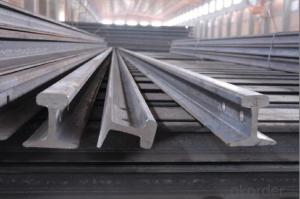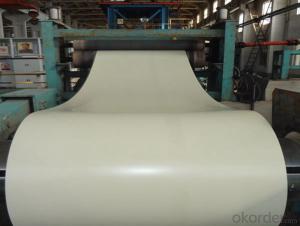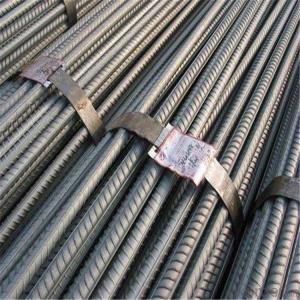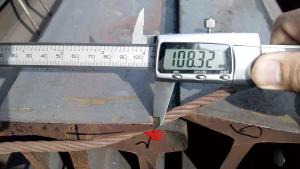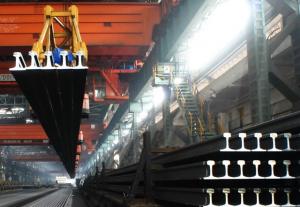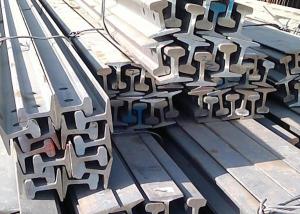Mild Steel Light Rail 55Q
- Loading Port:
- China Main Port
- Payment Terms:
- TT or LC
- Min Order Qty:
- 50 m.t.
- Supply Capability:
- 5000 m.t./month
OKorder Service Pledge
OKorder Financial Service
You Might Also Like
Product Description:
OKorder is offering Mild Steel Light Rail 55Q at great prices with worldwide shipping. Our supplier is a world-class manufacturer of steel, with our products utilized the world over. OKorder annually supplies products to African, South American and Asian markets. We provide quotations within 24 hours of receiving an inquiry and guarantee competitive prices.
Product Applications:
Mild Steel Light Rail 55Q are ideal for structural applications and are widely used in forest region, Mines, factories and construction sites laid of the place such as temporary transport line and light motorcycles with line.etc.
Product Advantages:
OKorder's Mild Steel Light Rail 55Q are durable, strong, and wide variety of sizes.
Main Product Features:
· Premium quality
· Prompt delivery & seaworthy packing (30 days after receiving deposit)
· Mill test certification
· Professional Service
· Competitive pricing
Product Specifications:
Manufacture: Hot rolled
Grade: Q235, 55Q
Certificates: ISO, SGS, BV, CIQ
Length:6m, 12m,12.5m
Package: Packed in bundles and shipped by break bulk or containers.
Trademark | Rank | Chemical composition (quality score) % | |||||
C | Si | Mn | S | P | |||
≤ | ≤ | ≤ | |||||
Q235 | A | 0.14-0.22 | 0.30 | 0.30-0.65 | 0.050 | 0.045 | |
Q235 | B | 0.12-0.20 | 0.30 | 0.30-0.70 | 0.045 | 0.045 | |
Trademark | Rank | Pulling Test | |||||
Bend PointΔs/Mpa | Tensile Strength | Elongation Ratioδ5% | |||||
Thickness (Diameter) /MM | Thickness (Diameter) /MM | ||||||
≤16 | 16-40 | ≤16 | 16-40 | ||||
≥ | ≥ | ||||||
Q235 | A | 235 | 225 | 375-500 | 26 | 25 | |
Q235 | B | 235 | 225 | 375-500 | 26 | 25 | |
FAQ:
Q1: Why buy Materials & Equipment from OKorder.com?
A1: All products offered byOKorder.com are carefully selected from China's most reliable manufacturing enterprises. Through its ISO certifications, OKorder.com adheres to the highest standards and a commitment to supply chain safety and customer satisfaction.
Q2: How do we guarantee the quality of our products?
A2: We have established an advanced quality management system which conducts strict quality tests at every step, from raw materials to the final product. At the same time, we provide extensive follow-up service assurances as required.
Q3: How soon can we receive the product after purchase?
A3: Within three days of placing an order, we will arrange production. The normal sizes with the normal grade can be produced within one month. The specific shipping date is dependent upon international and government factors, the delivery to international main port about 45-60days.
Images:

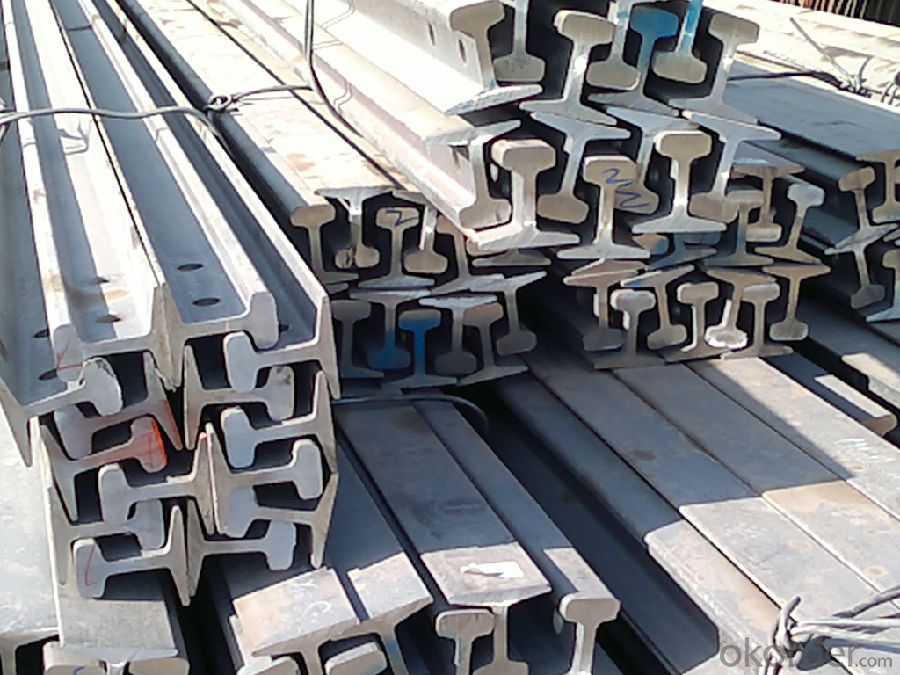
- Q:Do steel rails require any special tools for installation or maintenance?
- Yes, steel rails do require special tools for both installation and maintenance. Some of the common tools used include rail tongs, rail drills, rail saws, rail grinders, and rail lifters. These specialized tools are necessary to ensure proper installation, alignment, and maintenance of steel rails, ultimately ensuring the safety and efficiency of rail systems.
- Q:How are steel rails protected against track settlements?
- Steel rails are protected against track settlements through several measures. One common method is the use of ballast, which is a layer of crushed stones or gravel placed beneath the tracks. The ballast provides stability and helps distribute the load of the trains, minimizing the potential for settlements. Moreover, frequent inspections and maintenance are conducted to identify and rectify any issues in the track alignment or the ballast. Additionally, advanced techniques such as track tamping and track stabilizers are employed to ensure the rails remain firmly in place and prevent settlements.
- Q:Why should there be a certain gap in the rail connection?
- No, it's expansion and contractionMainly because the track is made of steel, it will heat up and contract cold.If you don't sew it, it will break in summer.But now the latest technology can be used in other ways to overcome the heat up cold contraction effect, as seamless.
- Q:What is the expected growth in demand for steel rails?
- The expected growth in demand for steel rails is projected to be steady and robust in the coming years. With the rapid urbanization and industrialization occurring in various regions worldwide, there is an increasing need for infrastructure development, particularly in the transportation sector. Steel rails are a critical component of railway networks, which are vital for efficient and reliable transportation of goods and passengers. The demand for steel rails is further fueled by the expansion of high-speed rail networks in several countries, as they provide a more sustainable and efficient mode of transportation. Additionally, the ongoing globalization and trade activities are leading to an increase in freight transportation, which requires a strong and reliable rail infrastructure. Furthermore, the growing emphasis on sustainable development and reducing carbon emissions is likely to drive the demand for steel rails. Rail transport is considered an environmentally friendly mode of transportation compared to other alternatives, such as road or air transport. This factor, along with the increasing awareness of the importance of reducing greenhouse gas emissions, will contribute to the growth in demand for steel rails. Moreover, emerging economies, particularly in Asia and Africa, are investing heavily in railway infrastructure to support their economic growth and development goals. These regions are witnessing rapid urbanization and industrial growth, which necessitate the expansion and modernization of their rail networks. As a result, the demand for steel rails is expected to experience significant growth in these regions. In conclusion, the expected growth in demand for steel rails is driven by factors such as urbanization, industrialization, high-speed rail development, sustainable transportation initiatives, globalization, and emerging economies' infrastructure investments. The steel rail industry is well-positioned to benefit from these trends and is projected to experience a steady and robust growth in demand in the foreseeable future.
- Q:What are the different types of fastening systems used with steel rails?
- The different types of fastening systems commonly used with steel rails include clip and bolt fastenings, spring clip fastenings, and pandrol fastenings.
- Q:What is the process of removing old steel rails?
- Several steps are typically involved in the removal of old steel rails. To begin with, the identification of the specific rails that require removal is necessary. This can be accomplished through inspections or surveys to determine if the rails are damaged, deteriorated, or no longer in use. Once the targeted rails have been identified, the workers will commence by disconnecting them from any adjoining tracks or structures. This may entail the loosening or removal of bolts, clips, or other fasteners that secure the rails in place. Following that, heavy machinery, such as cranes, excavators, or rail-specific equipment like rail pullers or rail grapples, will be employed to lift and extract the rails. The machinery will be positioned near or on the tracks, and the rails will be detached with care from the ground or supporting structures. Throughout the removal process, workers must ensure the implementation of proper safety measures. This includes wearing suitable personal protective equipment and adhering to established protocols in order to prevent accidents or injuries. Once the old steel rails have been successfully lifted from their original positions, they will be loaded onto trucks or railcars for transportation to a designated disposal or recycling facility. The application of proper handling and loading techniques guarantees efficient and safe transportation. In certain cases, the old steel rails may undergo recycling and be repurposed for future use. At the recycling facility, the rails will undergo processes such as cutting, shredding, and melting in order to transform them into new steel products. Overall, the process of removing old steel rails necessitates meticulous planning, the utilization of appropriate equipment, and adherence to safety protocols. It ensures the secure and efficient removal of worn-out rails, while also promoting recycling and sustainability within the railway industry.
- Q:Can steel rails be used in areas with high electromagnetic interference?
- Yes, steel rails can be used in areas with high electromagnetic interference. Steel is a highly conductive material that can effectively dissipate electromagnetic interference (EMI) and provide a stable electrical grounding. Additionally, steel rail tracks are often installed with proper grounding systems to minimize the impact of EMI. However, it is important to note that certain precautions should be taken to ensure minimal interference, such as proper shielding of electrical equipment and cables, use of surge protection devices, and adherence to best practices for EMI mitigation.
- Q:How do steel rails handle the effects of different track conditions (e.g., curves, gradients)?
- Steel rails are designed to handle different track conditions, such as curves and gradients, effectively. The shape and strength of steel rails allow them to withstand the forces exerted on them during these conditions. In curves, the rails are bent slightly to match the curvature, ensuring smooth and safe passage for trains. On gradients, the rails are laid at a specific angle to counteract the incline or decline, providing stability and allowing trains to climb or descend smoothly. Overall, steel rails are engineered to handle various track conditions, ensuring a reliable and efficient railway system.
- Q:How do steel rails perform under heavy axle loads?
- Steel rails are designed to withstand heavy axle loads with exceptional performance. The strength and durability of steel enable the rails to bear the weight and pressure exerted by heavy trains. Additionally, the resilience of steel helps to minimize deformation and maintain the stability of the track, ensuring safe and efficient transportation even under heavy loads.
- Q:How are steel rails inspected for weld quality?
- Steel rails are inspected for weld quality using various non-destructive testing methods, such as ultrasonic testing, magnetic particle testing, and visual inspection. These methods involve scanning the rails for any defects or discontinuities, such as cracks or incomplete fusion, to ensure the welds meet the required standards for safety and durability.
1. Manufacturer Overview |
|
|---|---|
| Location | |
| Year Established | |
| Annual Output Value | |
| Main Markets | |
| Company Certifications | |
2. Manufacturer Certificates |
|
|---|---|
| a) Certification Name | |
| Range | |
| Reference | |
| Validity Period | |
3. Manufacturer Capability |
|
|---|---|
| a)Trade Capacity | |
| Nearest Port | |
| Export Percentage | |
| No.of Employees in Trade Department | |
| Language Spoken: | |
| b)Factory Information | |
| Factory Size: | |
| No. of Production Lines | |
| Contract Manufacturing | |
| Product Price Range | |
Send your message to us
Mild Steel Light Rail 55Q
- Loading Port:
- China Main Port
- Payment Terms:
- TT or LC
- Min Order Qty:
- 50 m.t.
- Supply Capability:
- 5000 m.t./month
OKorder Service Pledge
OKorder Financial Service
Similar products
New products
Hot products
Hot Searches
Related keywords
